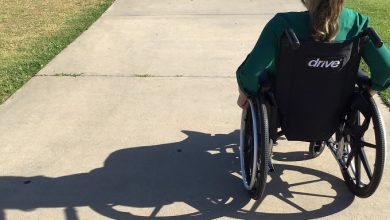Let’s face it — children miss valuable ‘shoulder-to-shoulder’ learning moments during remote schooling
Teachers make valiant efforts to maintain excellent schooling and, without doubt, technology can help – for those who have it. But students are missing out on “shoulder-to-shoulder” learning moments.

With Greater Sydney in extended lockdown and south-east Queensland and Victoria plunged back into lockdown, remote schooling is part of life for many students in Australia.
Teachers make valiant efforts to maintain excellent schooling and, without doubt, technology can help – for those who have it. But students are missing out on “shoulder-to-shoulder” learning moments.
Picture a typical day in the classroom. The teacher gathers the class, explains a new idea and sets the students to work in small groups on the day’s task. She moves around the room, stopping at each group.
The teacher is making mental notes on each student’s progress. She leans in to engage with some students, asking questions and acknowledging their work. Other times she chooses not to speak with the students and moves on.
Small moments with big impacts
These “shoulder-to-shoulder” moments may appear insignificant or random. But research has shown otherwise. Teachers are making deliberate decisions in the moment, based on their observations of students’ progress, whether to speak with the students and what to say.
The Japanese have termed these moments kikan-shido, meaning between-desk instruction.
In kikan-shido, the teacher is keenly observing students’ learning as she moves between desks scanning their work. This helps her decide when to connect with students. Depending on the students’ needs, she may be guiding them through questions or instructions, or redirecting to prod or extend students’ learning, or simply offering encouragement. Snippets of the talk are social – building teacher-student relationships that foster learning.
If she observes that students are on track, the teacher may choose not to connect to give students space to think and work through the work themselves. These rapid exchanges take place within minutes or less – with one eye on the student and another on the rest of the class. In this way, the teacher is able to provide timely interventions that meet the needs and rate of progress of individual students.
Kikan-shido is a widely recognised teaching activity across different countries and cultures, although the characteristics differ. In Japan, teachers often use kikan-shido moments to select student work examples for subsequent whole-class discussion.
Kikan-shido moments also provide instantaneous feedback for the teacher about their instruction. In Hong Kong, teachers may stop to instruct the whole class when they observe certain errors during their walkabouts. In this way, teachers are fine-tuning their instruction to better meet students’ learning needs.
It’s very hard to replace these moments online
These powerful adaptive kikan-shido moments are difficult to reproduce or replace during remote schooling, which can take varying forms. For some children it may mean working on printed packs of materials sent home from school. Many others have some screen instruction with their teachers.
For some students, household members may be trying to recreate shoulder-to-shoulder moments at home but mostly without the specialised knowledge and experience that the teacher offers. For others, learning from home might mean learning alone.
Even when teachers are onscreen with students, it’s more challenging for teachers to observe individual students’ work, check their understanding and adapt their instructions on the fly to cater to individual students.
In the past year, research has focused on evaluating the impacts of remote learning on student outcomes including learning losses, social emotional impacts and accessibility, and on teacher well-being. It’s time to focus on the impacts of teaching between-desk instruction, which influences not only learning but also relationships between teachers and students.
Teachers lift learning through powerful kikan-shido moments – swiftly monitoring pupil progress, responding to individuals’ queries, and stretching their progress by tailoring challenging questions. And, more than this, shoulder-to-shoulder moments perform another essential function by sustaining the human connections that build belonging and well-being.
How can you help your child during remote schooling?
Here are some suggestions for parents:
-
take a positive approach to learning at home by encouraging their efforts
-
ask what they are working on and check if they understand the task
-
offer help – but not too much! – when you are confident you can
-
encourage your child to keep in touch with their teachers and classmates
-
recognise that teachers and their schools are giving their best, and work in partnership with them.








